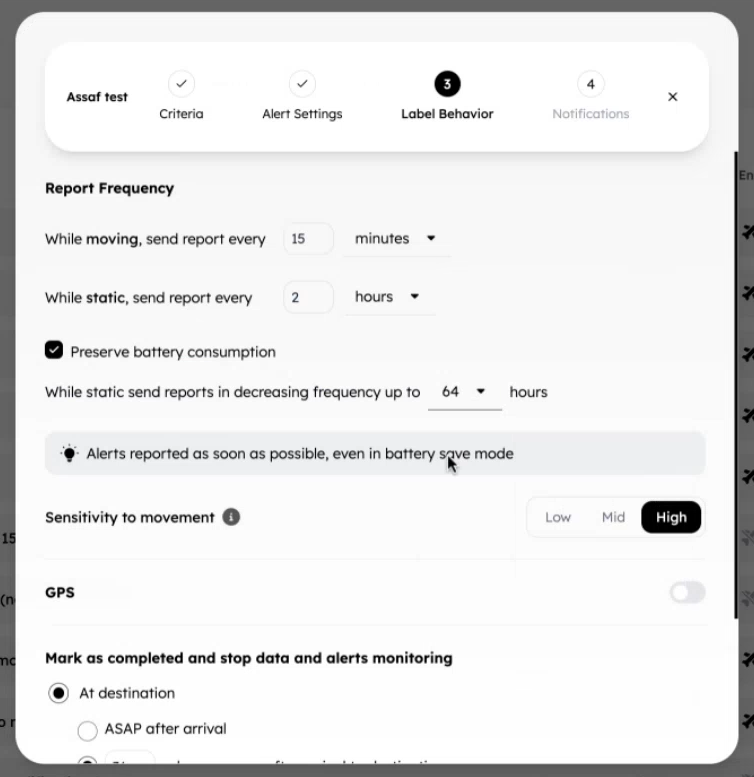Battery Life
Sensos Label battery life is influenced by user configuration, activated features, and reporting frequency.
Battery Life Estimates
A Sensos Label can typically generate 1,500 reports without GPS/GNSS enabled, or 300 reports with GPS/GNSS actively used.
Power Consumption
The type of report affects power consumption. For example, reports sent while the shipment is in transit generally use more power compared to reports sent when the shipment is stationary. Sending frequent location updates (especially using GPS) will drain the battery faster than relying on cellular location or sending reports less often.
Report Frequency Settings
When creating a new Set, users define the Report Frequency, which determines the timing and frequency of reports sent when the shipment is stationary and in transit. These two factors impact battery life. Users can adjust settings to conserve battery by decreasing reporting frequency and setting a target frequency (up to 64 hours). Here's how it works:
-
Static Reports: These are reports sent when the shipment is stationary. Users define the initial reporting interval for these reports.
-
Target Frequency: This is the desired reporting frequency (up to 64 hours) that the Label aims to achieve for static reports after an initial period to conserve battery.
-
Increasing Report Interval: To conserve battery, the Label will automatically extend the wait time between static reports after the initial interval. It will double the wait time for each subsequent report until the target frequency is reached. Once the target frequency is achieved, all following static reports will be sent at the defined interval.

Critical Reports
Critical reports (like Open Indication or Temperature Breach) consume more battery than regular reports. Unlike regular reports with no confirmation received, critical reports have an additional security layer. Since these events are critical, the Sensos Label attempts to receive confirmation (delivery receipt) for the report. This confirmation process consumes additional battery life.
- Delivery Confirmation: Critical reports require confirmation from the receiving system that the report was received. This two-way communication uses more battery power than sending a standard report.
- Unsent Critical Reports: Unsuccessfully delivered critical reports are saved and automatically retried during the next reporting cycle.
Intelligent Buffering Logic
The label’s buffering system is designed to capture the first occurrence of each report type, minimizing redundancy and focusing on essential data. For example, if there are multiple temperature breaches, only the initial breach is stored.
By understanding these factors, users can configure their Sensos Labels to balance battery life with the desired level of tracking detail and reporting frequency.
Updated about 1 month ago
Get in Touch. We’re Here to Help.
Let’s discuss how Sensos can transform your logistics operations:
Contact Us
